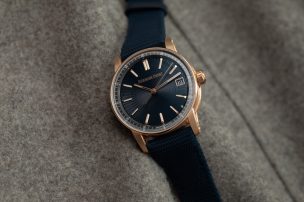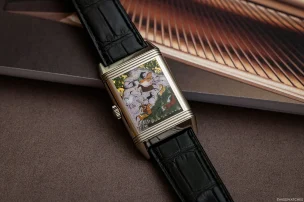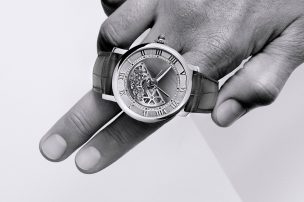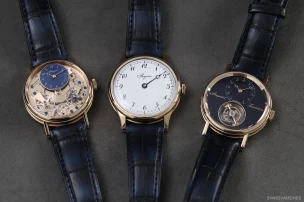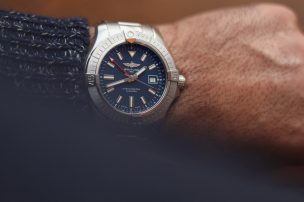
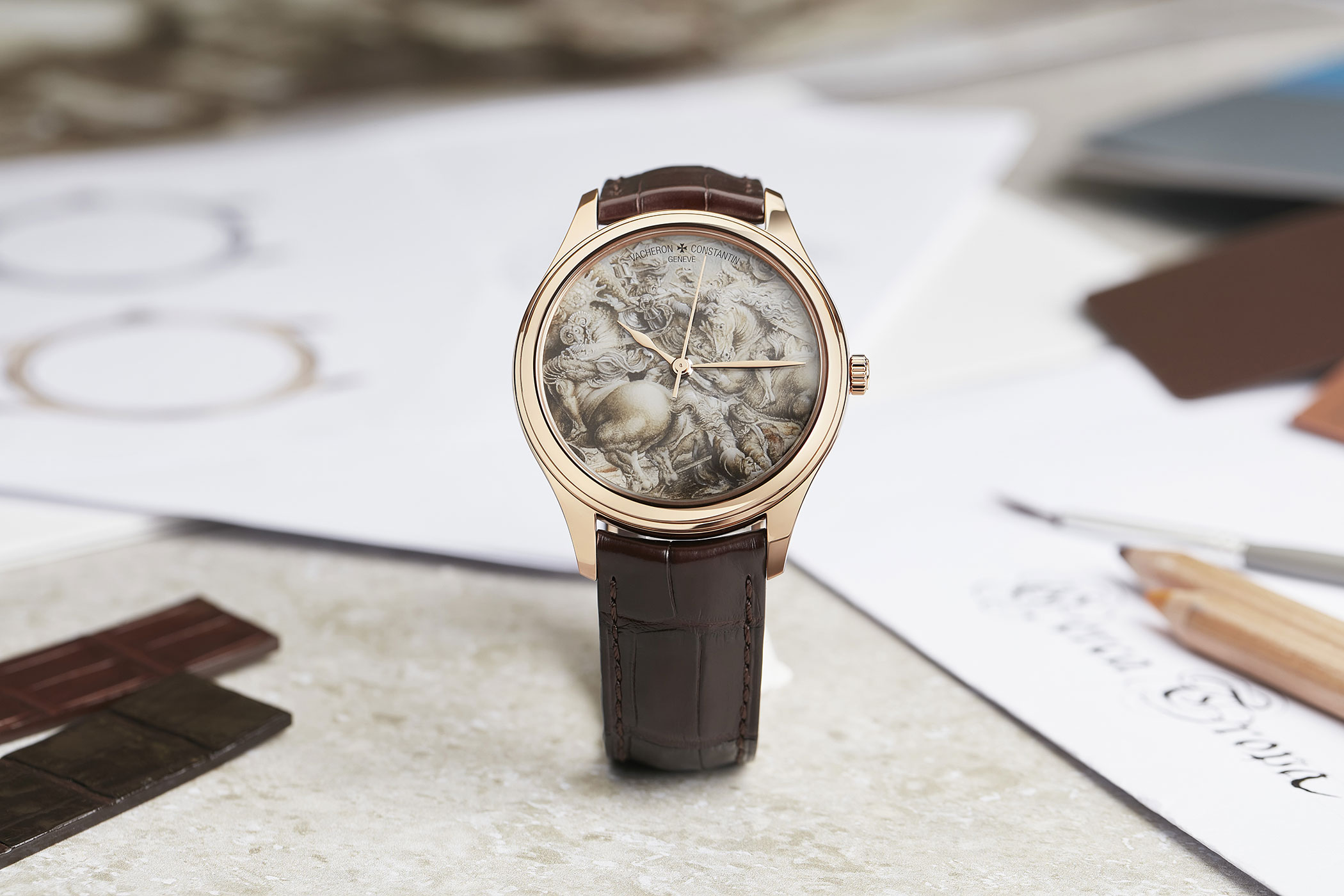
Louvre Art In Miniature Format: Vacheron Constantin Expands Its Cooperation With The Famous Museum
The Louvre, Paris. Once the residence of French kings, it is now the most visited museum in the world. It is home to a collection consisting of several hundred thousand works, based on the passion for art by a few. Among them are King Francis I (1515 – 1547), a patron of Leonardo da Vinci, and King Louis XIV (1638 – 1715). However, this collection fit for a king only became a museum and thus on public display following the French Revolution, when the National Convention decided to found a central museum for the arts of the Republic in 1793. The aim was to take responsibility for this immense cultural heritage, to make it accessible to the general public, and to grow as a society with it and from it.
In the context of the partnership between the watchmaker Vacheron Constantin and the Musée du Louvre, this history is twice as interesting. After all, as part of its ‘Les Cabinotiers’ collection, Vacheron Constantin is now producing unique pieces that will present paintings, drawings and sculptures from the Louvre’s inexhaustible collection on a few square centimetres of dial. They will all show what only the very few get to display in enamel form. Somehow, then, a piece of Louvre history will be repeated. Unique timepieces displaying such craftsmanship are now attainable for the industry’s most passionate disciples: the collectors and connoisseurs. They are so valuable and so rare that they will remain a mere dream for the vast majority, yet they serve as inspiration for the entire industry. These watches not only make a dream turn reality for their owners, but also take every single person interested in watches on a journey of contemplation as to what is possible in terms of craftsmanship, and where the pursuit of perfection can lead us.

Vacheron Constantin and the Louvre: A partnership of values
Partnerships of any kind are, in principle, rather standard in the watch world. They exist with car and fashion brands, comics and pop artists. Museums are not uncommon either. However, the partnership between Vacheron Constantin, established in 2019, has particularly ambitious goals. It is not just a matter of creating added brand value from the combination of two famous names. Louis Ferla, CEO of Vacheron Constantin, announced at the time: “I very much welcome the collaboration between our two institutions, both centuries old and yet firmly rooted in the 21st century.” He added that the intention was to combine their competencies with their most ambitious dreams. Laurence des Cars, the museum’s director, chimed in, “Our two institutions, born in the Age of Enlightenment, share a common mission to preserve and pass on the passion for art, cultural heritage and the excellence of craftsmanship handed down.” She, too, found that while both houses are firmly rooted in history, “they are open to the world of today.”
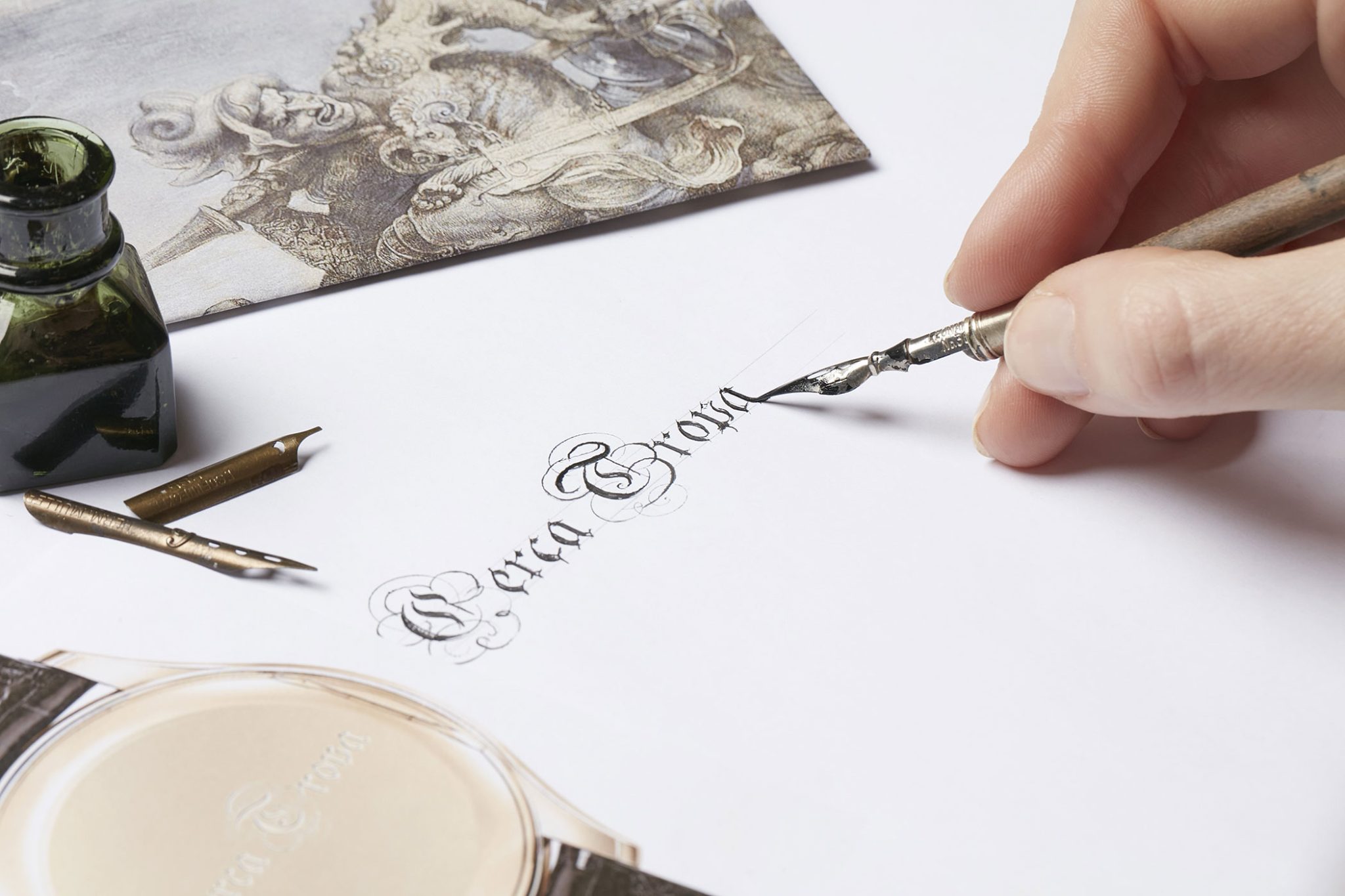
The new collaboration for the ‘Les Cabinotiers’ collection shows exactly what is meant by this, explains Christian Selmoni, Style & Heritage Director at Vacheron Constantin. In an interview with Swisswatches Magazine, he elaborates: “Our artisans and the specialists from the Louvre held meetings and discussions in advance, for example about the field of restoration. The conservation of works of art is something that is very close to our hearts and very much occupies our Heritage Department.” The Louvre was also supported in a very fundamental way, not least with a special contribution to the Louvre charity auction ‘Bid for the Louvre’, which can be seen as the beginning of the very special connection between the Louvre and Vacheron Constantin collection.
The first work: Rubens for the wrist
At the ‘Bid for the Louvre’ charity auction in 2020, a collector won the right to grace a ‘Les Cabinotiers’ watch with a Louvre work, to be reproduced using the Geneva miniature painting technique or the grisaille enamel technique. After a visit to the collection, the choice fell on La lutte pour l’étendard de la Bataille d’Anghiari by Pierre Paul Rubens. The drawing depicts the Battle of Anghiari and thus the victory of Pope Eugene IV and the Republics of Venice and Florence over the Duke of Milan’s troops.
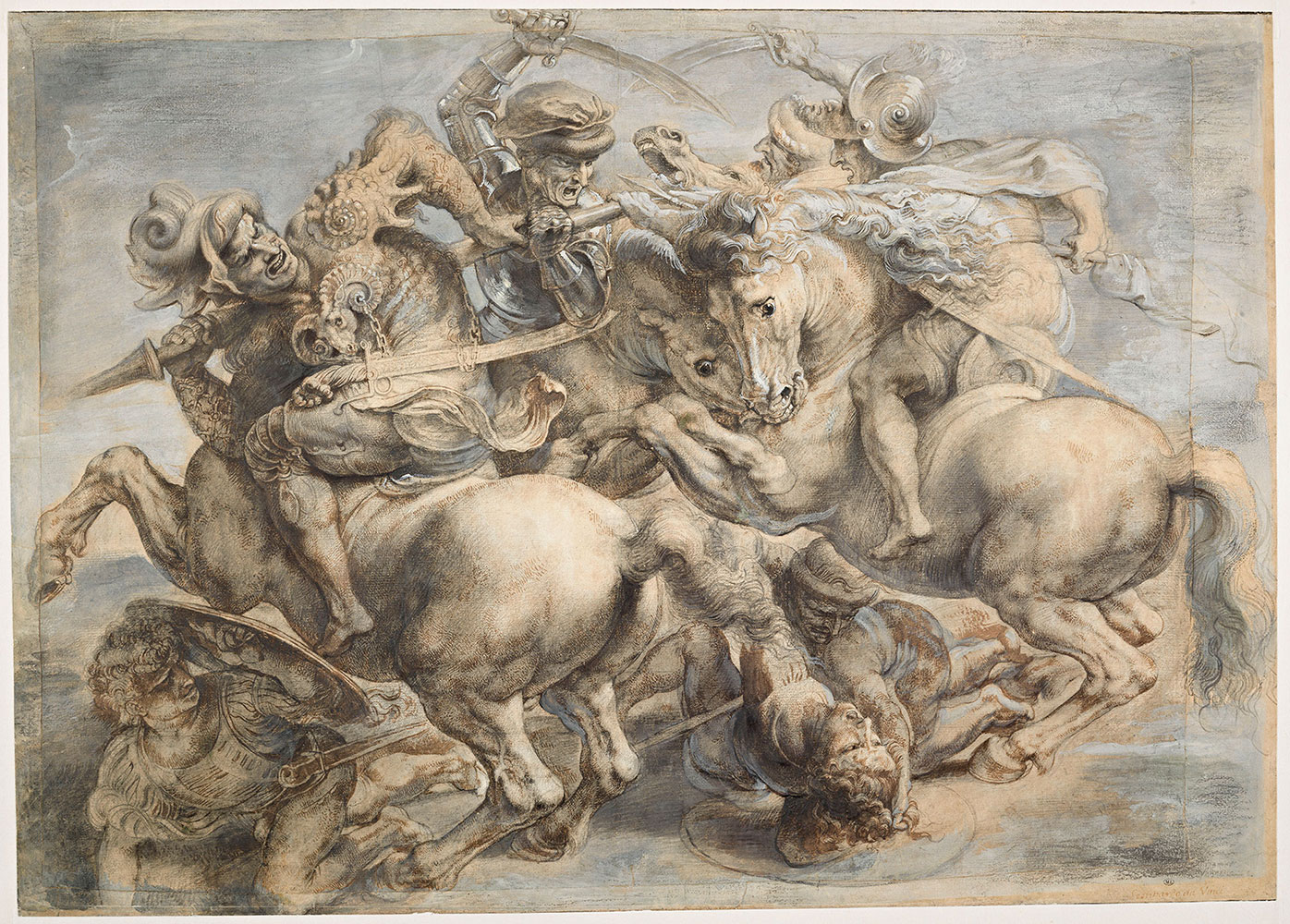
The effort to reproduce this drawing in enamel in the smallest format? Immense. Our master enameller chose the Geneva miniature painting technique, the most obvious one to pay tribute to the original work. Around 20 shades of brown, grey-brown, sepia-brown and cream-brown had to be produced, which required just as many firing processes, not least because that the colour of the enamel changes after heating. The artisan nevertheless broadened the scope of the traditional technique by using “Blanc de Limoges” enamel (specific to grisaille technique) to create depth-effect highlights and give greater relief and movement to the horse’s mane. Vacheron Constantin’s master enameller says modestly but with conviction, “We work by instinct. To do twenty firings in a row means you really have to have a handle on the fire.” The first layers, for example, may only be fired very lightly; just long enough to start glazing.
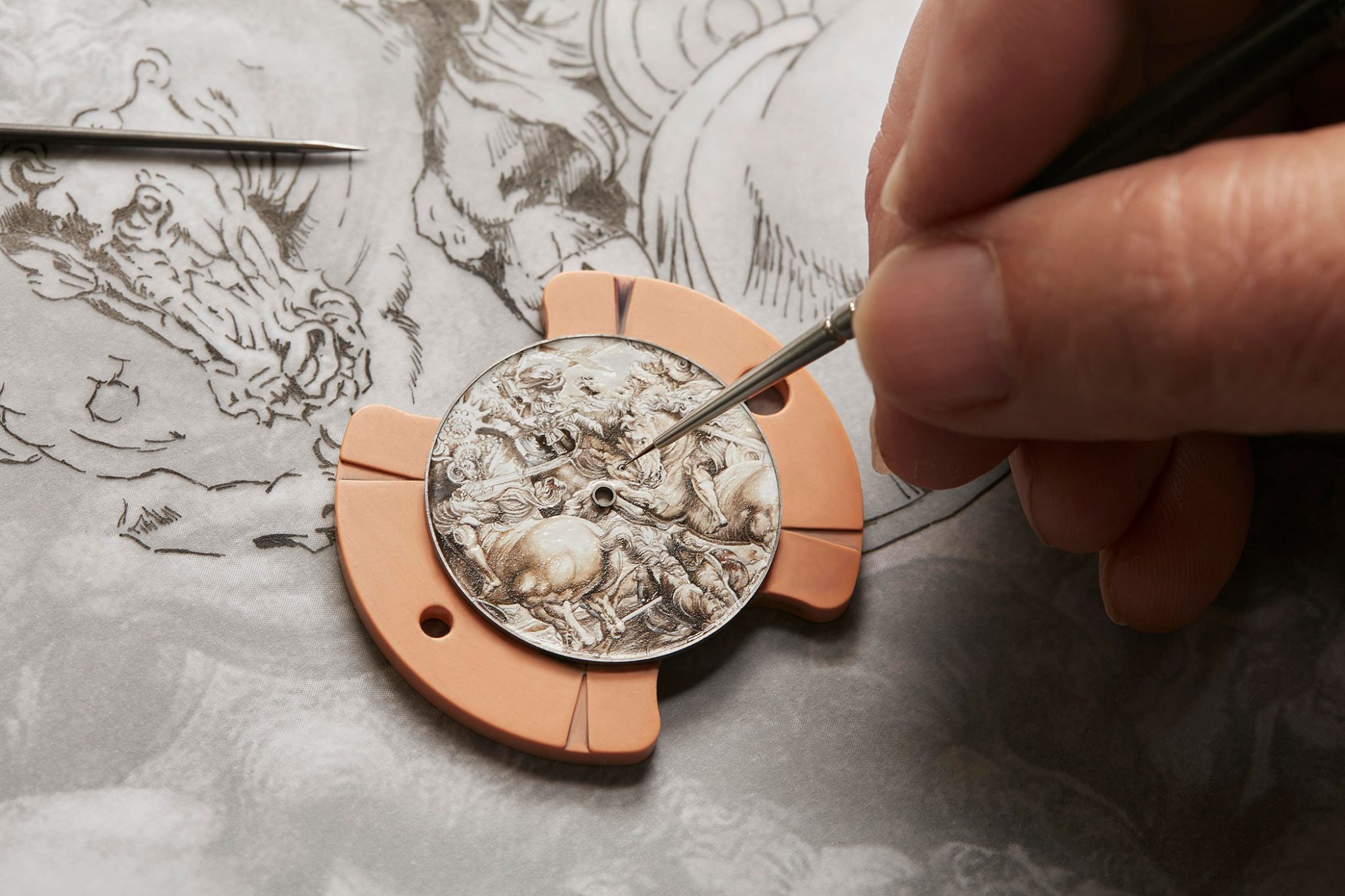
It’s a craft that only a few master to this level of perfection these days. According to Christian Selmoni, there are just a dozen people working in the Atelier Métiers d’Art, which is responsible for the ‘Les Cabinotiers’ models, who take care of the individual pieces, from engraving to enamelling. They cultivate crafts that are not particularly popular in the 21st century, but which receive the attention and admiration they deserve through timepieces like those from the Louvre collaboration.
Looking to the future: selected Louvre works on the dial
Art world x watch world – the collaboration is catching on. The first Rubens work made its appearance at the same time as the introduction of a four-piece mini-series of watches inspired by the museum’s antique collection. The exchange between the museum and the manufacture showed that the possibilities are almost limitless. So why not make the entire world of the Louvre accessible to customers?

Therefore, watches with motifs from the Louvre collection are being created at the request of customers. Christian Selmoni describes the creation process: “For each unique watch, our artisans visit the Louvre and consult with the curators immediately before the work, take pictures and discuss the procedure. The entire creation process then takes place in close cooperation with the museum’s experts and curators, who then also see the watch in the presence of the customer and virtually sign it off. Production is therefore going to be very, very, very small. It represents probably five watches a year at most, because we can’t possibly produce more than two models at the same time.”
Considering the inexhaustible Louvre collection, one would also be reluctant to reproduce a work of art more than once. Incidentally, one single work is excluded from the dial miniaturisation in advance. It’s the most famous of the Louvre collection: the Mona Lisa.
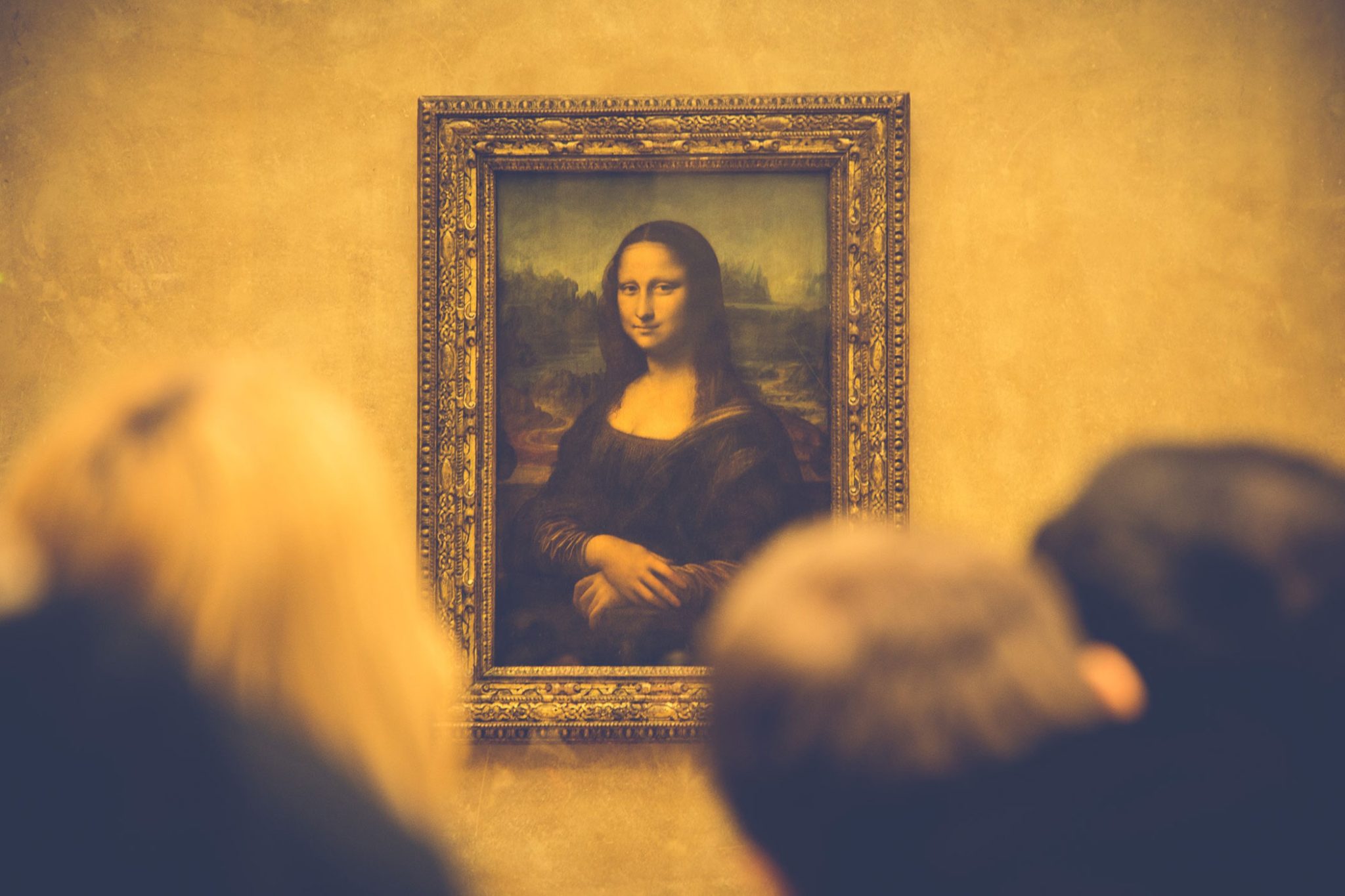
Credit © Eric TERRADE
According to Selmoni, “the Mona Lisa is so unbelievably famous that we, both the Louvre and Vacheron Constantin, don’t want to put her even more in the limelight.” The selection or artworks is huge even without Leonardo da Vinci’s work. After all, the collection includes countless works steeped in history such as The Pastoral Concert by Titian, Le Sacre de Napoléon by Jacques-Louis David, the Death of the Madonna by Michelangelo Merisi da Caravaggio, Liberty Leading the People by Eugène Delacroix, as well as masterpieces that are not even exhibited in the museum, but rather waiting as sleeping beauties to be shared with the world.
Art meets craftsmanship: the perfect alliance
Vacheron Constantin does not reveal the cost of the Louvre pieces for reasons of discretion, to which they feel obliged towards the collectors of these watches. But perhaps also because no price tag accurately reflects the true value of these timepieces. Christian Selmoni simply says: “The price merely reflects the time and skills required to deliver what Vacheron Constantin’s artisans strive for: excellence, rarity and beauty.”
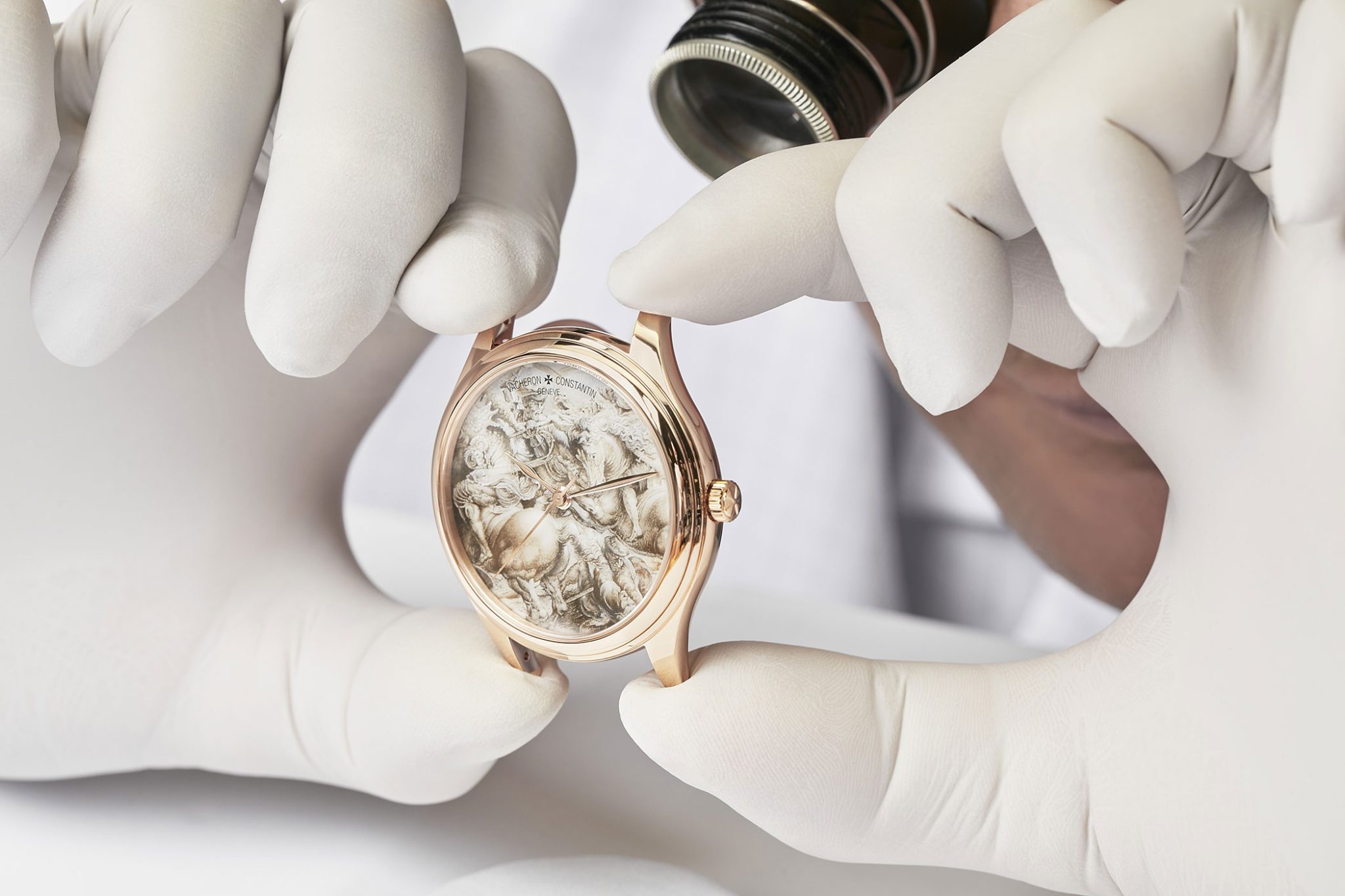
The customer therefore chooses the appropriate work of art and case material for the watch and the appropriate basic model and movement in consultation with the manufacture. In the case of the ‘Rubens watch’, for example, it was a rose-gold 40 mm automatic watch with the calibre 2460C – a classic three-hand watch, in other words, which Vacheron Constantin considers to be a pretty perfect canvas for the Louvre collaboration because of its clear design. The rest is done by master watchmakers and the best in their field in enamelling and engraving.
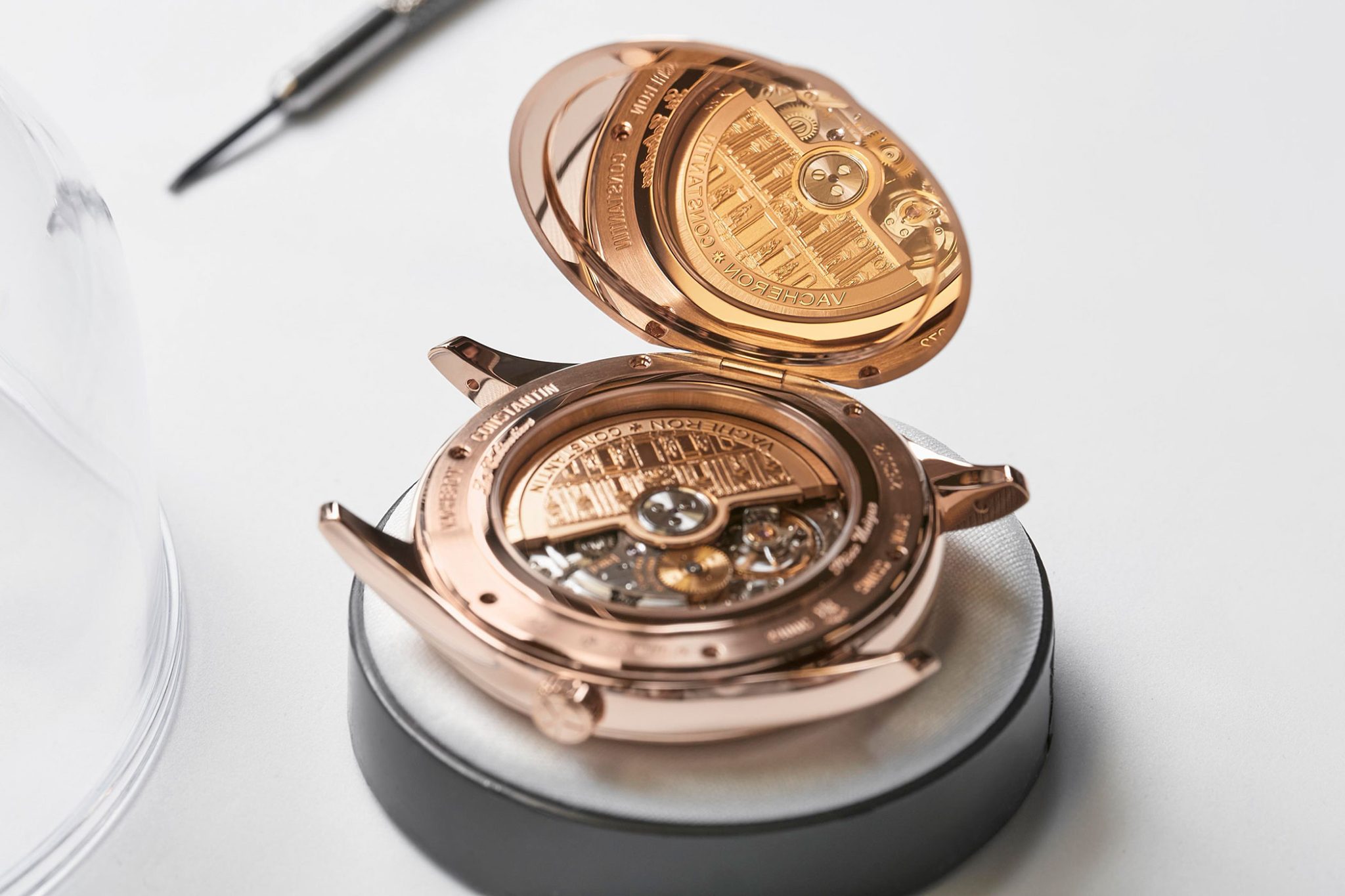
The result is then a unique piece for the collector, and a treasure trove of knowledge gained from its manufacture for Vacheron Constantin and its employees. Or as Christian Selmoni sums it up: “We are fundamentally very interested in combining our craft with other arts and cultures.” They have always had an open eye for everything that is happening in this field worldwide and in the most diverse cultures, because, as Selmoni articulates, “In a way, it is part of our self-image: we have very broad interests and want to incorporate our knowledge from the most diverse fields into our watches, especially those from the Métiers d’Art workshop.”
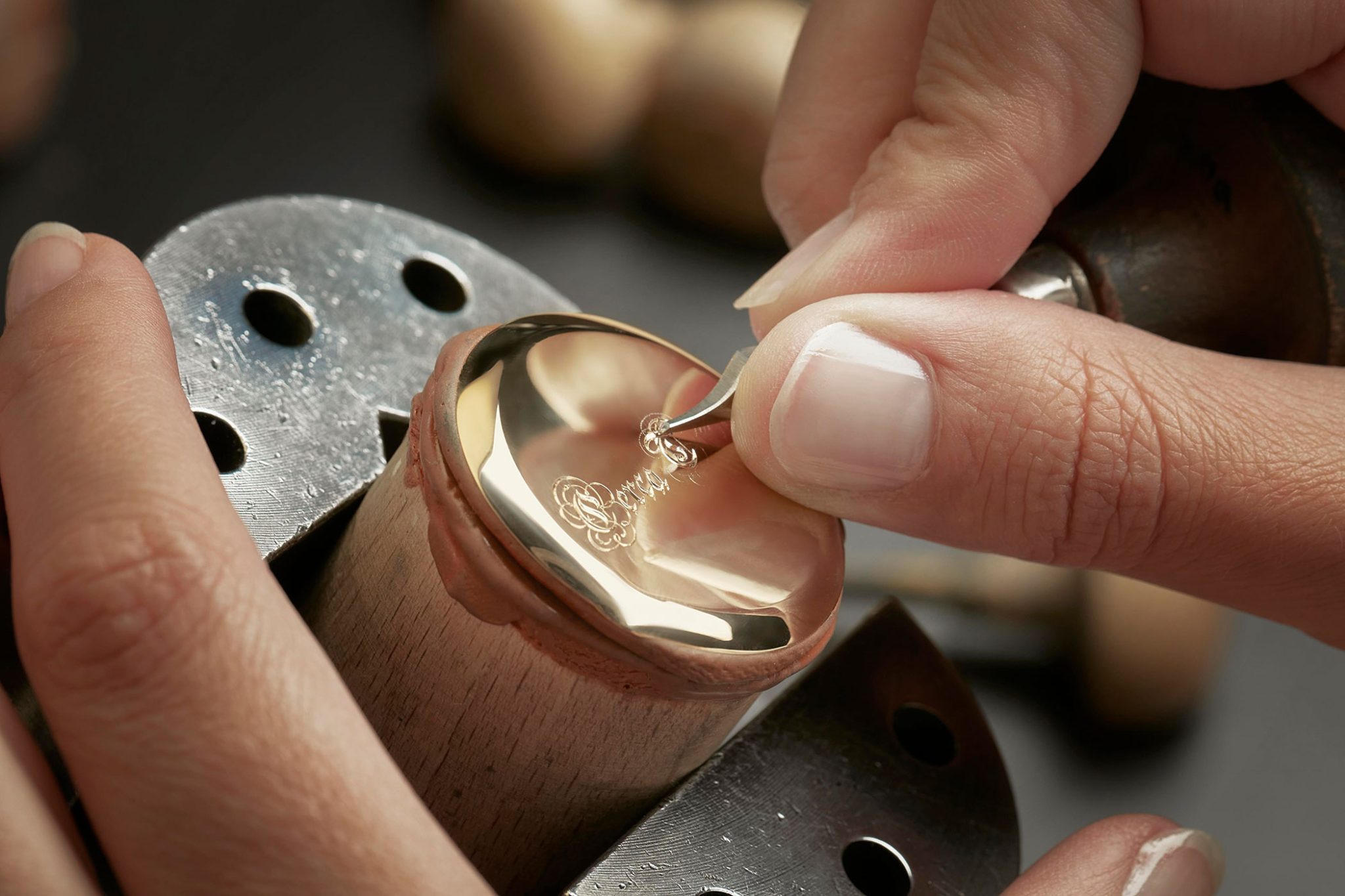
And what collector would disagree when it comes to declaring the making of a valuable mechanical timepiece into an exquisite form of art? However, these watches – at least here and now – are too good for museums. They are destined to be worn and admired in action. Art on a living object, so to speak. Nevertheless, they already have their value in contemporary history.


